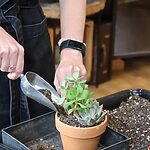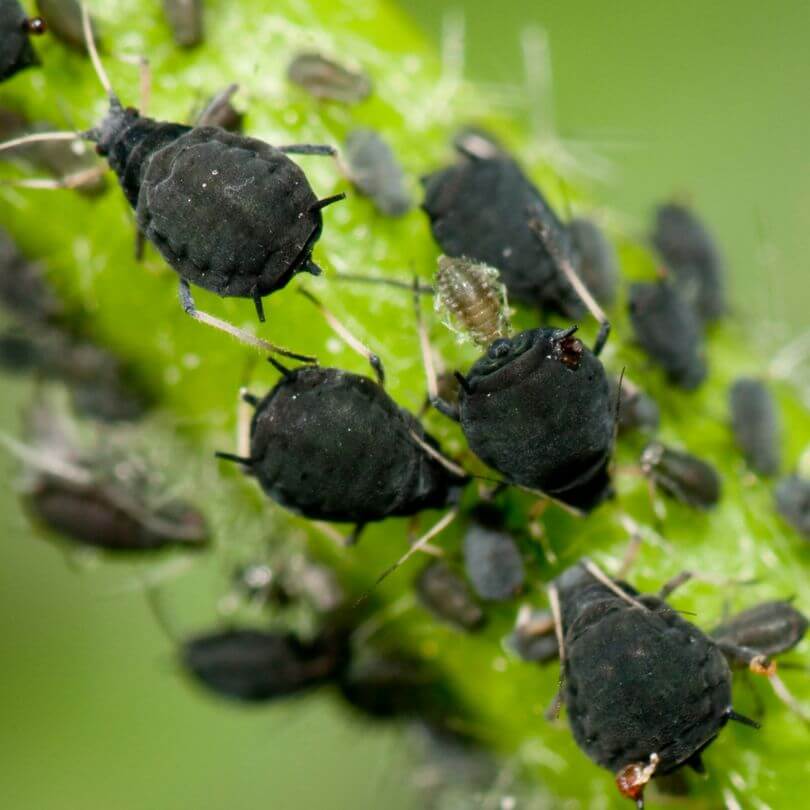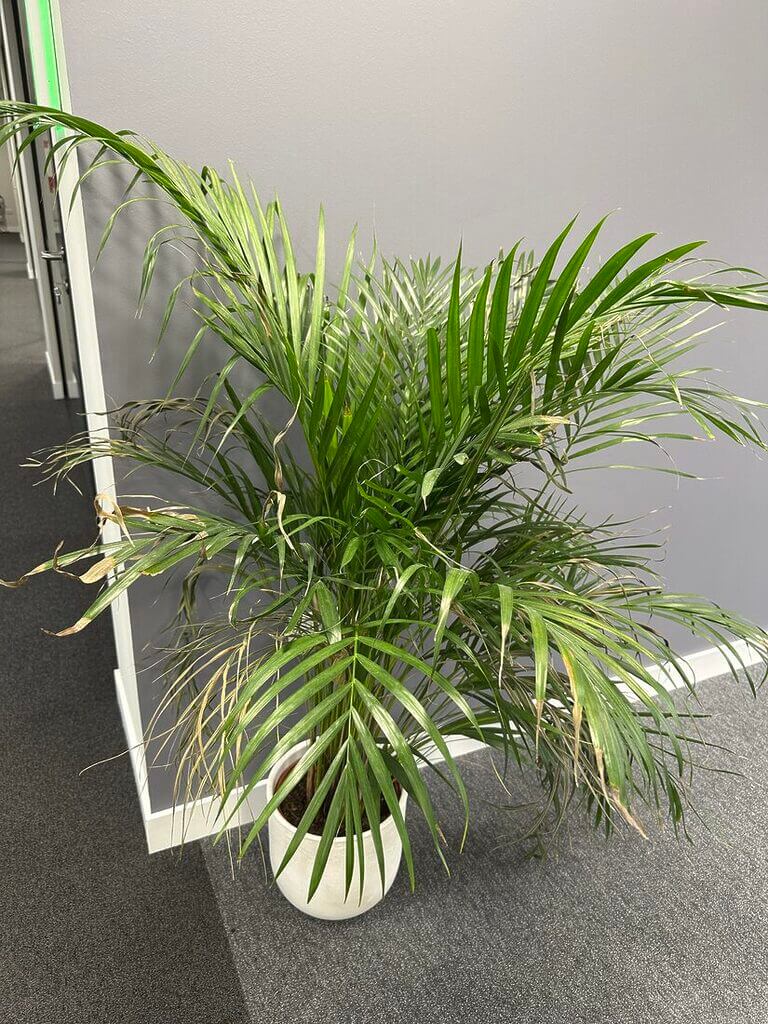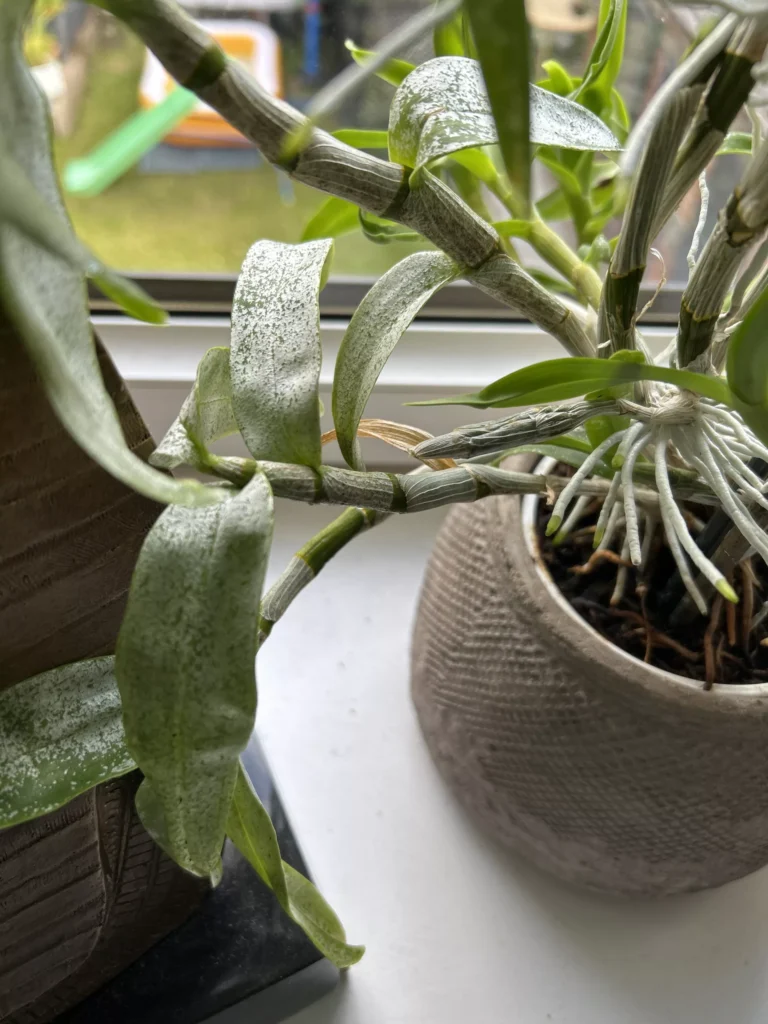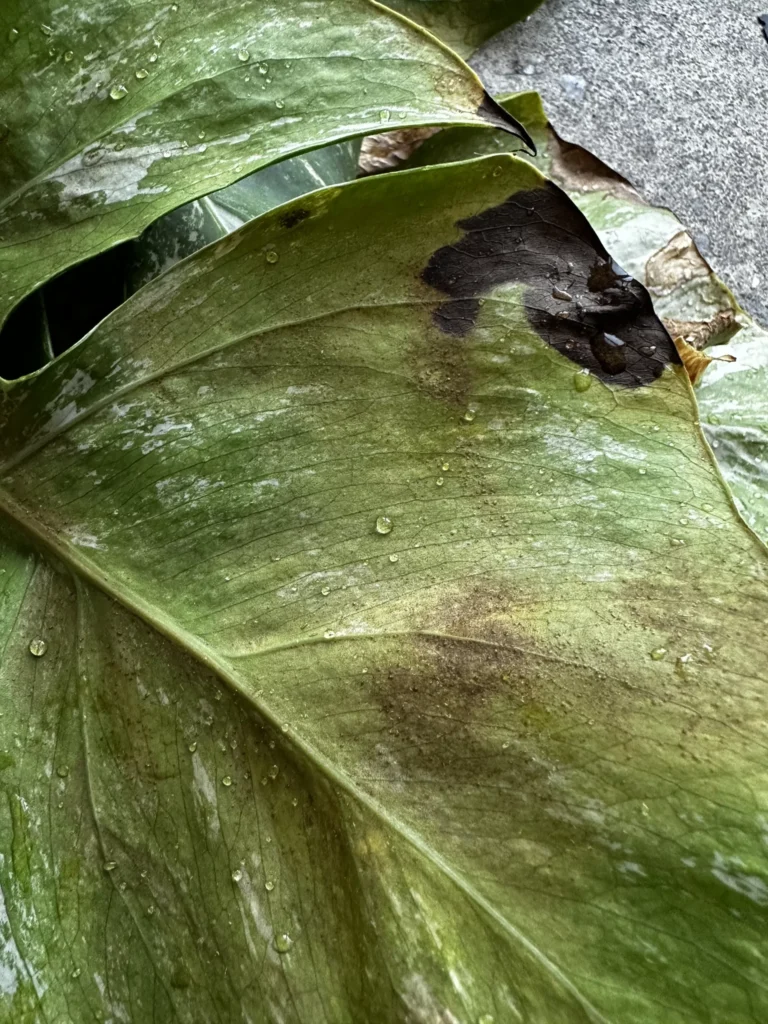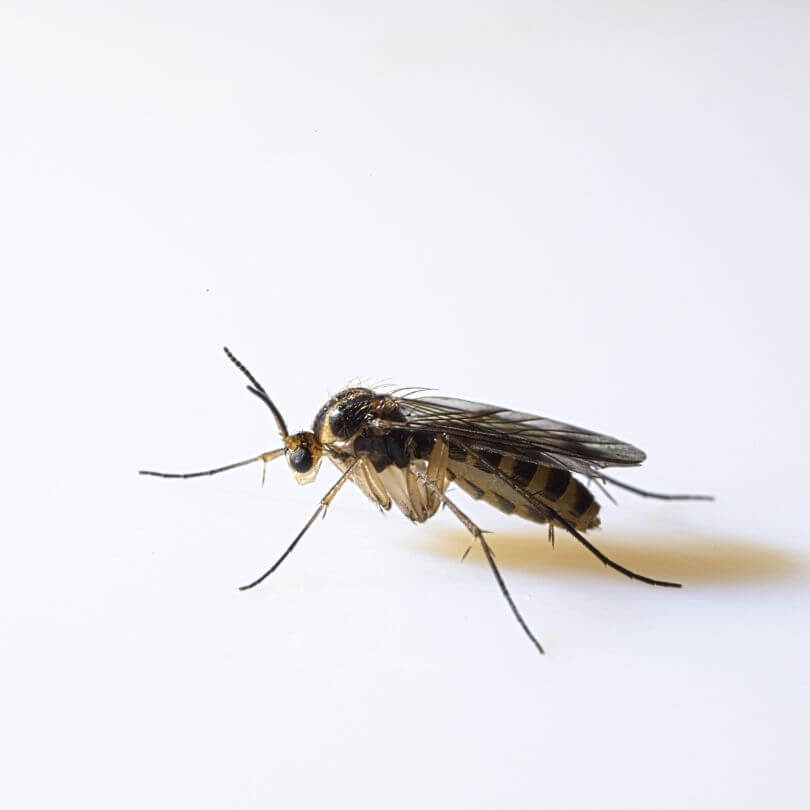The most important part of preventing and treating common houseplant pests is the ability to identify them, understand what they look like, what kind of damage they cause and how they impact the plants. In this article, we will highlight all the different houseplant pests, their characteristics and how best to treat your houseplants. Each pest highlighted will have accompanying pictures of damaged plants that will help you to identify them yourself.
Houseplant Pest Identification
Aphids
Appearance: Aphids are small, oval-shaped insects approximately 1-3mm in size. They are typically green, but can also appear black, yellow, or grey.
How to Spot: Aphids congregate on new growth, stems, and the undersides of leaves. They move slowly and are easy to identify due to their clustering habit. Look for leftover exoskeletons, which resemble white flakes on leaves and stems.
Damage Caused: They suck sap, causing leaves to curl, yellow, and distort. Aphids also excrete sticky honeydew, promoting sooty mould growth.
Favourite Indoor Plants: Aphids often target indoor plants like philodendron, monstera, begonias, and peace lilies.
Natural Treatments: Regularly wash plants with water to dislodge aphids. Use neem oil or SB Plant Invigorator weekly. Inspect new plants and quarantine infested ones to prevent spreading.
Spider Mites
Appearance: Spider mites are tiny (less than 1mm), spider-like pests, usually red, brown, or pale yellow. Often only noticeable with magnification.
How to Spot: Look for fine webbing on the undersides of leaves and stippled, discoloured foliage. Spider mites are slow movers but multiply rapidly.
Damage Caused: Leaves become speckled, yellowed, and eventually fall off. Severe infestations can significantly weaken plants.
Favourite Indoor Plants: Spider mites commonly infest indoor plants like ficus, calatheas, and ivies.
Natural Treatments: Increase humidity to deter mites. Clean leaves with water regularly, apply neem oil or SB Plant Invigorator, and isolate affected plants immediately.
Mealybugs
Appearance: Mealybugs appear as small (2-5mm), white, fluffy cotton-like masses. They are oval-shaped and covered with a powdery wax.
How to Spot: Frequently hide in leaf axils, along stems, or near the soil line. They move slowly or not at all, making them easier to identify.
Damage Caused: Mealybugs drain plant sap, leading to stunted growth, leaf yellowing, and leaf drop. They produce honeydew, causing sooty mould.
Favourite Indoor Plants: Often found on indoor plants like hoya, succulents, orchids, pothos, and hoyas.
Natural Treatments: Dab infested areas with a cotton swab dipped in alcohol. Regular application of neem oil or SB Plant Invigorator can effectively control mealybugs. Inspect plants thoroughly and quarantine new arrivals.
Scale
Appearance: Scale insects have a hard, waxy, dome-shaped shell that is brown, tan, or white, measuring about 2-5mm.
How to Spot: Typically found immobile on stems, undersides of leaves, or at leaf joints, blending in with plant colour.
Damage Caused: Scale insects suck sap, causing yellowing leaves, reduced plant vigour, and leaf drop. Honeydew production leads to sticky surfaces and sooty mould.
Favourite Indoor Plants: They often infest indoor plants like ficus, dracaena, hoyas, and zz plants.
Natural Treatments: Manually scrape scales off gently. Regular applications of neem oil or SB Plant Invigorator can control populations. Quarantine new plants and inspect regularly to prevent infestations.
Thrips
Appearance: Thrips are slender, tiny insects (1-2mm), typically black or brown, with long, narrow bodies.
How to Spot: Usually found on leaves and flowers, causing silver or brown streaks on foliage. They move quickly and hide effectively within plant folds. They are easy to spot by their shiny dots of excrement and distinctive black specks on leaves.
Damage Caused: Thrips feed on plant tissue, causing discolouration, distorted growth, and severe leaf damage. They can significantly weaken plants.
Favourite Indoor Plants: Frequently attack indoor plants like monstera, philodendron, alocasia, monstera and African violets.
Natural Treatments: Regularly spray neem oil or SB Plant Invigorator and maintain cleanliness by removing damaged leaves promptly. Inspect and quarantine new plants to prevent spread.
Fungus Gnats
Appearance: Fungus gnats are small (2-4mm), slender black flies resembling tiny mosquitoes.
How to Spot: Commonly seen flying around potting soil or sitting on plant surfaces. Their larvae live in damp soil and are translucent with black heads.
Damage Caused: Larvae feed on roots and organic matter, potentially causing root damage, weakened plants, and stunted growth.
Favourite Indoor Plants: Any houseplant with consistently moist soil, particularly ferns, maranta, calatheas, and peace lilies.
Natural Treatments: Allow soil to dry slightly between waterings, use diatomaceous earth powder, carnivorous plants, and apply neem oil drench or beneficial nematodes to soil. Avoid overwatering and quarantine affected plants.
We Need Your Help – Join Our Community of Plant Lovers
If you have a picture of a pest and need help identifying it, feel free to email us at contact@highlandmoss.com. Our team will be happy to assist you-and your photo may help us improve this guide by adding more helpful pest ID images for fellow plant lovers.
Conclusion
Although pests can cause significant damage to our beloved houseplants, it’s important to remember that they are part of the natural ecosystem. At Highland Moss, we believe in treating pest problems with eco-friendly, non-toxic methods that are gentle on plants and the planet. Using natural treatments like neem oil, SB Plant Invigorator, and regular cleaning can be highly effective. Strong chemical pesticides not only harm beneficial insects like bees, but pests can also build resistance to them over time. Choosing organic prevention and natural solutions supports healthier homes, stronger plants, and a greener future for everyone.
Another important step in preventing pest issues is choosing where you buy your plants. Purchasing plants from responsible sellers who use natural prevention methods and regularly inspect their plants can reduce the risk of bringing pests home. While plants from large garden centres or supermarkets might seem slightly cheaper, it’s worth considering the long-term health of your collection—sometimes the real cost is paid in damaged or infested plants.



